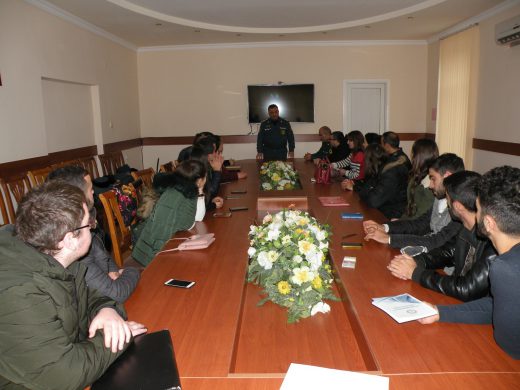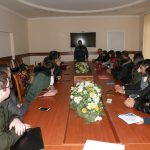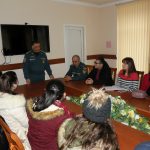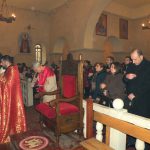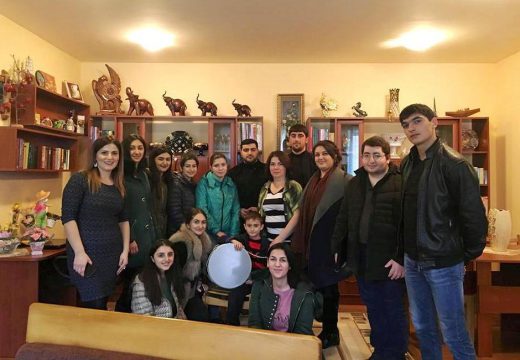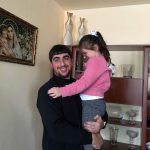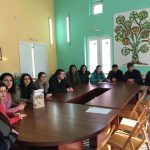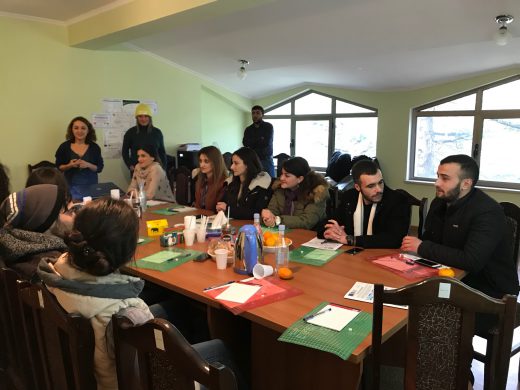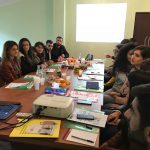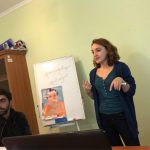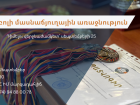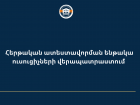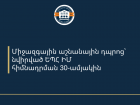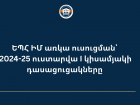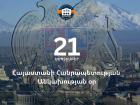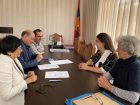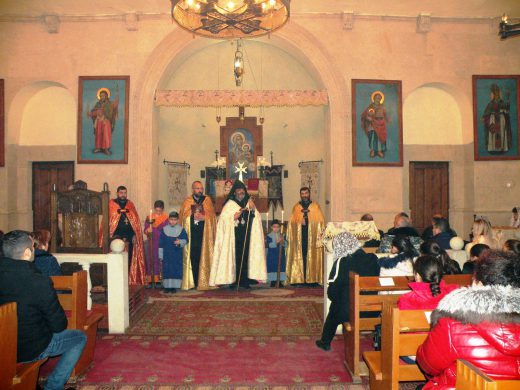
On December 7th, 2018, a group of representatives of YSUIB administrative and professorial staff, headed by acting director A. V. Tsutsulyan paid tribute to the victims of the 1988 earthquake.
At Nerses Shnorhali Church, the Primate of the Diocese of Tavush, Bishop Bagrat Galstanyan together with Holy Simeon, Holy Torgom and Holy Arshavir served a mass in remembrance of the victims.
High-ranking representatives of different spheres of Tavush region, citizens, were present at the ceremony for the victims of the earthquake.
On 7 December, 1988, a devastating earthquake (later called Spitak earthquake)in northern Armenia killed 25,000 and left over 500,000 homeless. It took less than a minute, but the consequences were devastating.
A 10 magnitude near the epicenter devastating earthquake took place in 40% of the territory of Armenia at 7.41.22.7 GMT (11.41.22.7 local time). The epicenter by the records of seismographs has the following coordinates: latitude 40.92°N, longitude 44.23°E. The depth of the hypocenter, measured by various methods and means, varies from 2.5km to 10-15km. It is natural as the earthquake source as a spatial, geological body came out to the earth’s surface at the Dzorashen-Halavar area and in subsurface it extended at least about 15-20km depths. The magnitude of the earthquake was 7.0. The intensity at the epicenter was 10 value on MSK-64 intensity scale.
The earthquake hit 40 % of the territory of Armenia, densely populated region with 1 ml people. The affected area, where the intensity of the earthquake was > 8, involved 30002 km area. 21 towns and 342 villages were destructed, 514.000 people were left without shelter, 20.000 people were injured and 12500 people were hospitalized. Number of victims was about 25.000. Particularly in Gyumri (15.000-17.000) and in Spitak (4000) number of victims was more than anywhere else.
17% fund of dwellings were destroyed, the work of 170 industrial companies were halted, the great losses were caused to villages and agro industrial complexes as well as to the architectural, historical and cultural monuments, 917 public buildings were destroyed.
The unexpected disaster took unawares the organizations and agencies that were called to work in emergency. The rescue activities were systemized only two or three days later. From the first second the earthquake strike, the population carried out restless rescuing works. Anyhow the absence of their experience and sometimes the lack of basic knowledge on actions in emergency caused real difficulties for the efficiency of rescue operations. Even there were cases when the public unawareness brought to life losses. Also there was a need of rescue equipment.
With the efforts of population and the rescuers 45.000 dead or alive people were brought out from the rubble and 12.5000 people were hospitalized.





